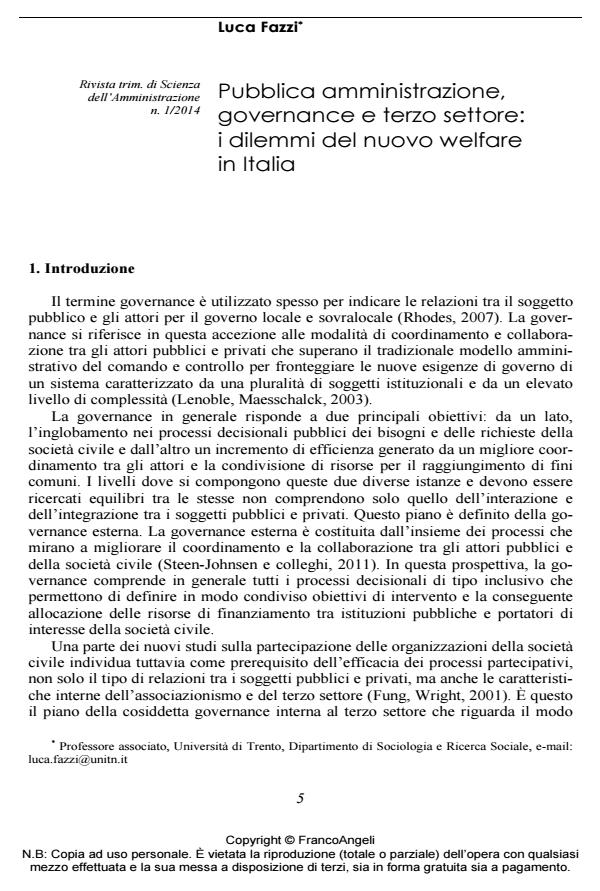Public administration, governance, and the third sector: the dilemmas of the new welfare system in Italy
Journal title RIVISTA TRIMESTRALE DI SCIENZA DELL’AMMINISTRAZIONE
Author/s Luca Fazzi
Publishing Year 2014 Issue 2014/1
Language Italian Pages 18 P. 5-22 File size 873 KB
DOI 10.3280/SA2014-001001
DOI is like a bar code for intellectual property: to have more infomation
click here
Below, you can see the article first page
If you want to buy this article in PDF format, you can do it, following the instructions to buy download credits

FrancoAngeli is member of Publishers International Linking Association, Inc (PILA), a not-for-profit association which run the CrossRef service enabling links to and from online scholarly content.
The article describes how the governance of the relationships between public authorities and the third sector in Italy has evolved over the past decade. These are complex relationships characterized by radical changes with respect to the past. The article initially provides a general description of public/third sector relationships, and then focuses on three specific aspects: the economic changes that have impacted on the social policy agenda; the bureaucratization of regulatory systems; and the decline of the public services economy. The conclusion is that Italy currently lacks a policy design able to enhance the welfare mix as a means to achieve the real modernization of the Italian welfare system.
Keywords: Third sector, governance, welfare mix
Luca Fazzi, Pubblica amministrazione, governance e terzo settore: i dilemmi del nuovo welfare in Italia in "RIVISTA TRIMESTRALE DI SCIENZA DELL’AMMINISTRAZIONE" 1/2014, pp 5-22, DOI: 10.3280/SA2014-001001